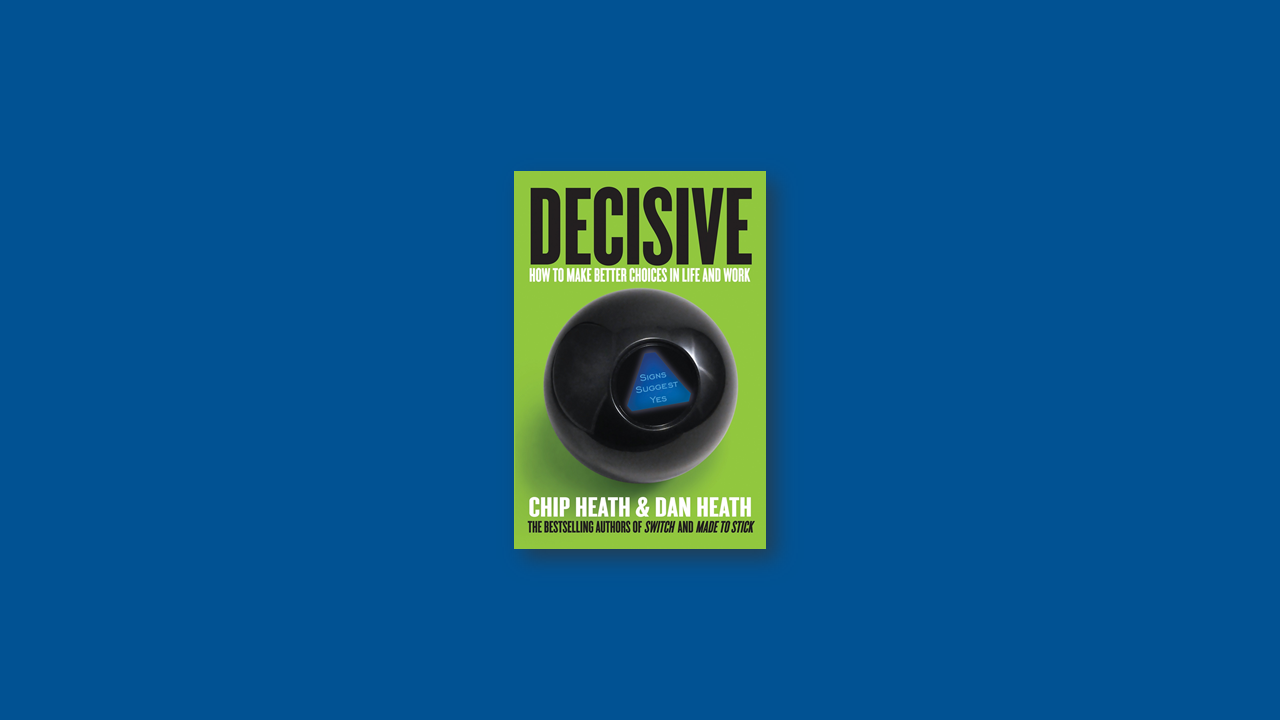In our cars we may spend 95% of the time going straight, but its the turns that determine where we end up. So choose your turns wisely.
4 Villains of Decision Making
- Narrow Framing – we are drawn to choose from a handful of options
- Confirmation Bias – we are predisposed to favor the opinion which we want to be true. We focus on the supporting evidence and decide based on that and that alone.
- Short-term Emotion – we let our emotion get the better of us
- Overconfidence – we think we know more than we do
Use WRAP Model to Make Better Decisions
#1 Widen your options
- Consider what are you giving up by making a choice
- Question what else can be done
- Think AND instead of OR
- Use vanishing options test
- Don’t fall pray to paradox of choice, less than 5 is usually enough
#2 Reality-test your assumptions
- Consider opposite (opinion murder boards)
- Ask probing questions (zoom in and zoom out)
- Talk to domain experts
- Work with prototypes and experiments first
#3 Attain distance
- 10/10/10 think how you’ll feel after 10 minutes, 10 months and 10 years
- Imagine how would you advise to your best friend in your situation
#4 Prepare to be wrong
- Optimism can conceal consequences
- Consider both extremes, good and bad
Take 1 option 1 at a time, ask: “What would have to be true for this option to work?”
And see people switch from arguing to analyzing, discussing logical underpinning of each option.
“What problem does it have?” prompted 89% of the seller to come clean.
Keep experts talking about the past and present. Not the future.
Don’t let experts predict and trigger them to use their inside view. Experts are bad at predictions, but great at assessing base rates. So, ask questions like:
- “What are the important variables in a case like this?”
- “How many cases get settled before trials?”
- “And of those that put to trial, what are the odds the client prevail?”
Ask “Imagine that 6 months from now, an employee has just quit. Why did he quit?”
Perspective hindsight seem to spur more insights because it forces us to fill in the blank today and the future event, as opposed to the uncertain event that may or may not happen.

